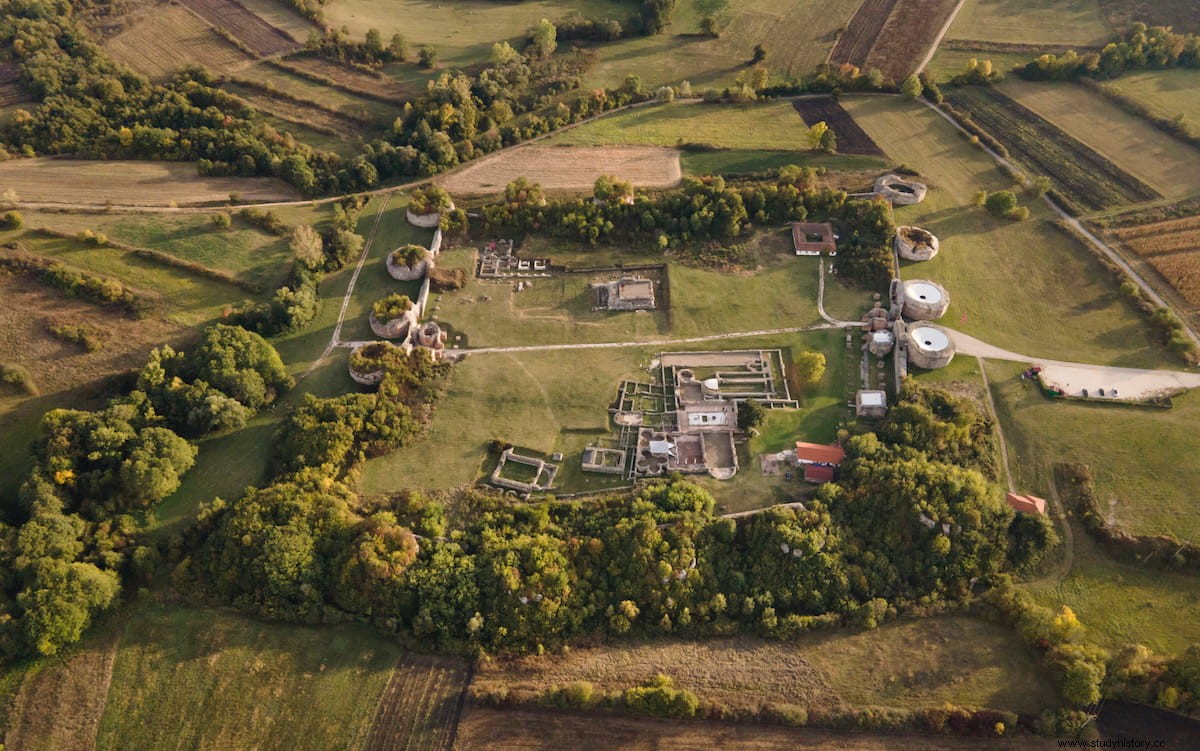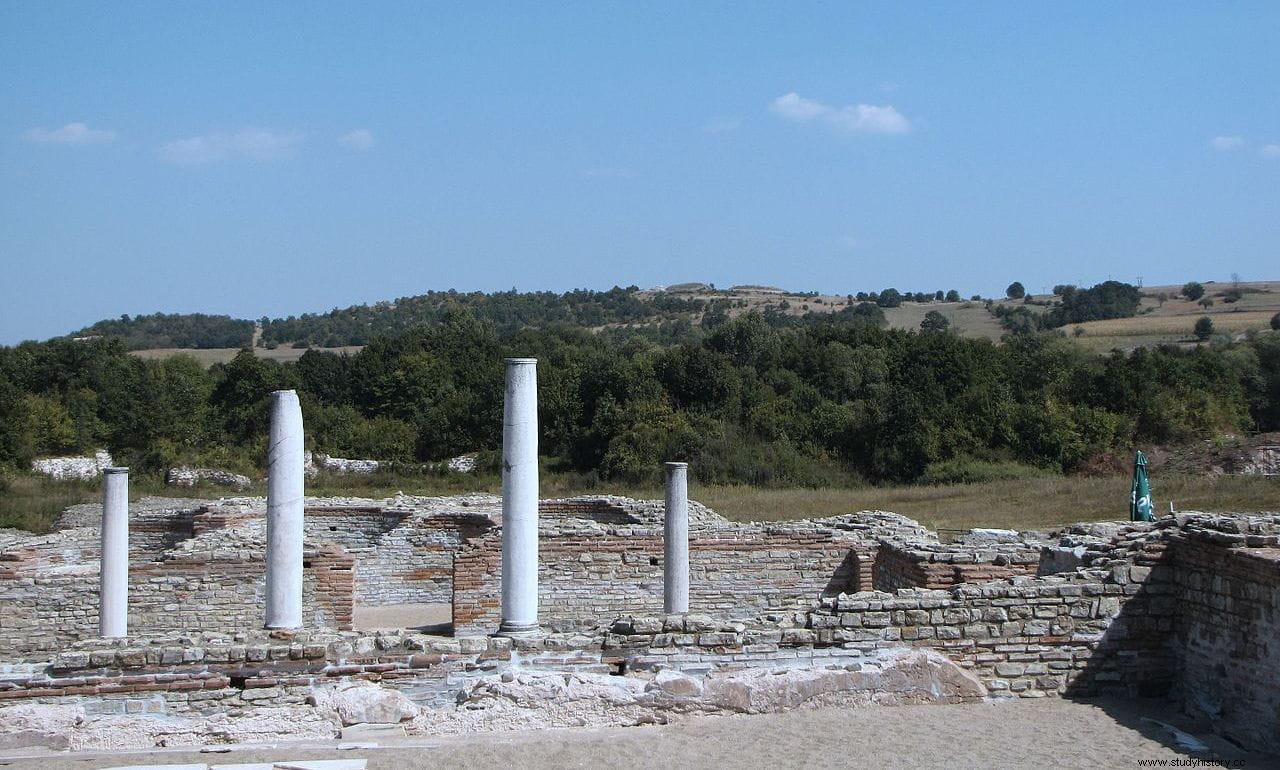Near the village of Gamzigrad in the Timok Valley, east of present-day Serbia and near the ancient Danube limes, are the ruins of a large Roman settlement.
The first descriptions of the site were made by the German geologist August von Herder in 1835, and as early as the late 19th century the Hungarian archaeologist Felix Philipp Kanitz described the site as one of the largest and best preserved Roman structures he had ever seen.
But it would not be until 1953 that systematic excavations would begin at the site. In 1975, the archaeologist in charge of them at the time, Dragoslav Srejovic, identified it as the palace intended for the retirement of Emperor Galerius, similar to Diocletian's Palace in Split.

It was not until 1984, when an inscription was discovered inside the complex with the name Romuliana, that the place was identified as the old Felix Romuliana founded by Galerius in honor of his mother, Romula, who had been born nearby. . This also confirmed that the palace was his retirement residence.
However, not all specialists agreed. The tradition that placed Felix Romuliana in the northwest of present-day Bulgaria and the tomb of Galerius himself in the Rotunda of Saint George in Thessaloniki (Greece) weighed heavily.

But later excavations on the nearby Magura hill, located a kilometer from the complex's eastern exit, found two burial mounds that turned out to be the tombs of Galerius and his mother.
Galerius, whose full name was Gaius Galerius Valerius Maximianus, was born in the place where he would later found Felix Romuliana (although some sources indicate that it may have been in Serdica, the current Sofia capital of Bulgaria). Dedicated to livestock, like his Thracian father, he enrolled in the Roman army, standing out under the command of the emperors Aurelian, Probus and Diocletian.
The latter named him Caesar when he created the tetrarchy in 293 AD. and he married his daughter Galeria Valeria (forcing him to separate from his first wife Valeria Maximilla). In 305 AD, when Diocletian and Maximian jointly abdicated, Galerius was promoted to the rank of Augustus (emperor) of the eastern part of the empire.

He started the construction of the palace in 289 AD, first serving as a residence for his mother. He himself planned to retire there upon his future abdication in 313 (on the 20th anniversary of his throne or vicennalia , one of the conditions imposed by the tetrarchy system). He wouldn't give him time, for he died in 311 AD. Earlier, after her mother's death, he had had her buried in a burial mound on the nearby Magura hill. Another one was built for him right there.
After the death of Galerio the construction activities stopped and Felix Romuliana remained as a villa or vicus rural. The Huns destroyed it in 441 AD, but for the following century there were still some inhabited houses on the site. During the reign of Justinian I it was rebuilt and enlarged with a large basilica with a baptistery.

The Avar and Slavic invasions destroyed it again, to establish a new settlement that lasted until the 12th century. It was then abandoned and gradually fell into ruins, until its rediscovery in the 19th century. Today it is considered one of the most important late Roman sites in Europe.
The complex has a wall almost 4 meters thick with 20 bastion-shaped towers about 15 meters high. Another inner wall, older, had 16 towers 10 meters high joined by walls 1.80 meters thick. Between these two fortified rings there was a portico, of which some remains still remain.
It housed two temples (one dedicated to Galerius and the other to his mother), two palaces and a building with a corridor that has magnificent mosaics of mythological themes.

One of the palaces has its vestibulum completely covered with a long mosaic decorated with geometric motifs and a labyrinth in the center. Its walls are covered with marble, green porphyry and frescoes. It has an octagonal floor plan and included baths and a central room that could have been used as a throne room.
In the complex, portraits and sculptures of Roman emperors made of porphyry and coins have been found that help to date it precisely.
